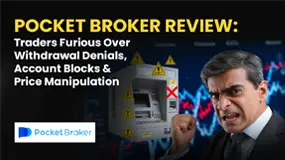简体中文
繁體中文
English
Pусский
日本語
ภาษาไทย
Tiếng Việt
Bahasa Indonesia
Español
हिन्दी
Filippiiniläinen
Français
Deutsch
Português
Türkçe
한국어
العربية
How To Use Technical Analysis In Forex Markets
Abstract:Technical analysis involves the use of a price chart, which provides a roadmap for past price behavior. A technical analyst relies on the past to predict the future.

Futures are a microcosm of the OTC market
Volume and open interest metrics provide clues for price direction
Momentum indicators are powerful technical tools at times
Technical analysis can fail at times
Charts are useful tools for investors and traders as they offer insight into herd behavior. In a book written in 2004, author James Surowiecki explained how crowds make better decisions than individuals. Markets are embodiments of Surowieckis thesis as the current price of an asset is the level where buyers and sellers meet in a transparent environment.
When it comes to the global foreign exchange market, buyers and sellers of currencies determine the rates of one foreign exchange instrument versus others on a real-time basis. At the same time, governments manage the level of currency volatility to maintain stability. Technical analysis can be particularly useful in the currency markets as technical levels can provide clues about levels where government intervention is likely to occur.
Technical analysis includes support and resistance levels where currency pairs tend to find lows and highs. At the same time, price momentum indicators often signal where exchange rates are running out of steam on the up and the downside.
Technical analysis can breakdown at times when black swan events occur.
Futures are a microcosm of the OTC market
In the world of foreign exchange, the over-the-counter market is the most liquid and actively traded arena. The OTC market is a global and decentralized venue for all aspects of exchanging the currency of one country for another; it is also the largest market in the world. In April 2019, the average trading volume was $6.6 trillion per day. The OTC market operates twenty-four hours per day, except for weekends.
Futures markets for currency pairs are smaller, but they reflect the price action in the OTC market. When it comes to technical analysis, the futures market provides a window into the price trends and overall state of the strength or weakness of one currency versus another.

The weekly chart of the dollar versus the euro futures contract displays the price action in the currency pair since late 2017. The bar chart on the bottom reflects the weekly volume, which is the total number of transactions. The line above volume is the open interest or the total number of long and short positions.
When volume and open interest are rising or falling with the price, it tends to be a technical validation of a price trend in a futures market. When the metrics decline with rising or falling prices, it often signals that a trend is running out of steam, and a reversal could be on the horizon. Volume and open interest are two technical metrics that aid technical traders looking for signs that a trend will continue or change.
Momentum indicators are powerful technical tools at times
Stochastics and relative strength indices can provide a window into the overall power of a trend in a futures market.

Beneath the weekly price chart, the slow stochastic is an oscillator that aims to quantify the momentum of a price rise or decline. Stochastics work by comparing closing prices with price ranges over time. The theory behind this technical tool is that prices tend to close near the highs in rising markets and near the lows in falling markets.
A reading below 20 indicates an oversold condition, while over 80 is a sign of an overbought condition. On the weekly chart of the euro versus the dollar currency pair, the reading of 31.42 indicated that the stochastic oscillator is falling towards oversold territory in a sign that the downtrend could be running out of steam.
The relative strength indicator compares recent gains and losses to establish a basis or the strength of a price trend. A reading below 30 is the sign of an oversold condition, while an overbought condition occurs with a reading above the 70 level. At 45.55 on the weekly dollar versus euro chart, the indicator points to a neutral condition in the currency pair.
Technical analysis can fail at times
Technical analysts look for areas of price support and resistance on charts. Support is a price on the downside where a market tends to find buying that prevents the price from falling further. Resistance is just the opposite, as it is the price on the upside where a market tends to experience selling that prevents it from rising further. When a price moves below support or above resistance, it often signals a reversal in a bullish or bearish price trend.
Technical analysis is not perfect, as the past is not always an ideal indicator of the future.

The chart of the currency relationship between theUS and Australian dollar shows that the price broke down below technical support and experienced a spike to the downside. The price movement turned out to be a “blow-off” low on the downside that reversed after reaching a significantly lower price.
Technical analysis provides a roadmap of the past in the quest for insight into the future. Many market participants use technical analysis to make trading and investing decisions, which often creates a self-fulfilling prophecy as a herd of transactional activity can create or impede a price trend. Technical analysis is a tool that foreign exchange traders use to project the path of least resistance of exchange rates.
Some of the most influential participants in the foreign exchange markets are governments. Historical price volatility in foreign exchange markets tends to be lower than in most other asset classes because governments work independently or together, at times, to provide stability for exchange rates. Therefore support and resistance levels tend to work well over time.

Disclaimer:
The views in this article only represent the author's personal views, and do not constitute investment advice on this platform. This platform does not guarantee the accuracy, completeness and timeliness of the information in the article, and will not be liable for any loss caused by the use of or reliance on the information in the article.
Read more

KVB Global Exposed: High Slippage, Hidden Transaction Fees & Fund Scams
Does the MT4 platform provided by KVB Global minimize your actual profit? Does the broker deny your withdrawal request and instead tell you to deposit more? Have you faced hidden charges on blockchain transactions by the KVB Group? Have you witnessed massive fund scams while trading with the KVB broker? You need to act fast and even take legal assistance to recover your stuck funds. Several traders have alleged that KVB Global is involved in illegitimate trading activities. Check out their complaints in this KVB Global review.

Pocket Broker Review: Traders Furious Over Withdrawal Denials, Account Blocks & Price Manipulation
Does Pocket Broker ask you to verify the payment method repeatedly as you request fund withdrawals? Does the South Africa-based forex broker disallow you the same despite multiple verifications? Does your Pocket Broker forex trading account get blocked without any reason? Do the prices shown on the Pocket Broker login vary from real market prices? These are forex investment scams that Pocket Broker has been allegedly involved in. Read on to find more details.

Is MH Markets Safe or a Scam? Regulation and Fund Security Explained
Is MH Markets a real broker or a potential scam? This is the most important question for any trader thinking about using this platform. Let's give you a straight answer right away. MH Markets is a working broker, not a complete fake scam. Read on to learn more about this crucial due diligence you need to do as a trader.

Your Complete MultiBank Group Crypto Trading Guide (2025)
Many traders ask us: can you trade crypto with MultiBank Group? The answer is yes. You can access the exciting cryptocurrency market through a special tool called a Contract for Difference, or CFD. This guide will teach you everything you need to know about MultiBank Group crypto trading. We will show you the basics of their crypto CFDs and how to make your first trade. Our goal is to give you the knowledge and confidence to explore these markets safely and effectively. We'll explain the platform's features, available coins, and the important risk management strategies you need to succeed.
WikiFX Broker
Latest News
Forex24 Faces CySEC Fine for Late Compliance Filing
One Wrong Move Wiped Out a Government Retiree’s Lifetime Savings
MH Markets Review 2025: Trading Platforms, Pros and Cons
Octa FX in Pakistan: The Complete Guide to Local Payments, Regulation, and Support
Mekness Review: Traders Report Alleged Fund Scams & Account Blocks
INTERPOL, AFRIPOL Crack Down on Africa Terror Finance
Forex Scam Checker Philippines: Verify Brokers with WikiFX
"Our Business Has Died": Texas Services Sector Sentiment Slumps Further In October
D Prime to Exit Limassol Office Amid Doo Group Restructure
Fake Trading Platforms Are Spreading Fast Across Asia | How Investors Are Being Tricked
Currency Calculator



